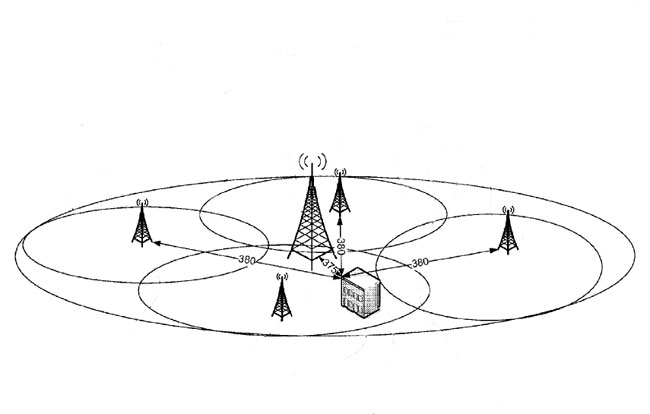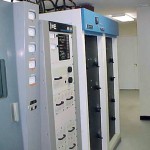I saw this item many weeks ago, but, had not had time to look at it until now. Geo Broadcasting Solutions has filed Petition for Rule Making (RM-11659) based on a system that divides the coverage area of major stations into smaller zones allowing for ad targeting of specific audiences. They have coined the term “Zone Casting” to describe the scheme. It is covered by two US-issued patents filed by Lazer Spots, LLC: 20120014370 and 20110065377. After a look at these two patents, it seems there are three possible ways to accomplish this Zone Casting Scheme:
- In the first described method, the main transmitter is broadcasting area wide and all the zone transmitters are muted. An inaudible signal is transmitted to all units, the main transmitter is then muted and the zone transmitters turn on and transmit localized content. After the local information is transmitted, the zone transmitters mute and the main transmitter resumes broadcasting.
- In the second described method, the main transmitter and the zone transmitters are broadcasting area-wide information. The main transmitter ceases broadcasting area-wide information and the zone transmitters begin broadcasting localized information. At the end of the localized information, the main transmitter and zone transmitters transmit area-wide information.
- In the third describe method, the main transmitter and zone transmitters are broadcasting wide area information with “capture ratio pattern.” The main transmitter initiates an alteration, temporarily becoming a zone transmitter. The zone transmitters then transmit localized content. After the localized content, the main transmitter becomes a main transmitter again.
All of the transmitters are linked to the studio via digital STL systems, and content for the zone transmitters is distributed via IP network. The transmitter frequencies are synced with GPS, similar to FM on channel booster stations. Method number three includes possibly switching the transmitter output to a lower gain and or lower height antenna.

Of the three methods, the first system will result in the fewest interference issues. No matter which method is used, there will be interference issues between the zone transmitters and or the main transmitter where the signal strengths are equal and the audio is 180 degrees out of phase. These can be moved around slightly by adding delay to the audio signal, but they will always be present. More about Same Frequency Networks (SFN) and Synchronized FM signals can be found here. While the zone transmitters are transmitting dissimilar localized information, standard capture effect rules apply.
The system has had limited testing in Salt Lake City, Utah (KDUT) and Avon Park, Florida (WWOJ), which according to the filing and comments, went well.
Geo-Broadcasting is applying to conduct a full test with WRMF in Palm Beach, FL. The expected installation will include up to 22 zone transmitters.
Conceptually, tightly targeted advertising is not a bad idea. Advertisers like it because they perceive a better return for their dollar. The cost of such a system is not insignificant. Transmitter site leases run $1-2K per month, leased data lines, equipment, installation work, equipment shelters, etc will likely run several hundred thousand dollars or more.
If it gets approved by the FCC, it will be interesting to see how it works and whether or not the system is financially justifiable.






Sounds like another Rube Goldberg nightmare, just another way to suck the last dime out of an ever unlistenable deteriorating FM band. IBOC,co-channel,adjacent
channel, LPFM, out of control pirates and now SELF INTEFERENCE. Much like both sides of the idiot Hockey debacle our industry seems hellbent on killing the goose that lays the golden egg. When FM reaches the AM point of irrelevancy everyone will say….. how did this happen and why did no one stop it.
Simulcasting, but not quite. Of course, they need to control the interference. I really wonder sometimes looking at these things if someone just dreamed it up without doing any research into the existing body of knowledge.
I thought of something like this for ham radio, and it’s applicable to two-way radio as well. The concept I refer to as “sortacasting”. Multiple repeaters share a common frequency, but separated from each other by a normal coordination distance so that each transmitter would not normally overlap another’s coverage. The repeaters are then linked together using VoIP, so that the corresponding audio offsets won’t irritate the users. Of course, the way to manage the coverage would be with two dedicated pairs of repeaters, alternating repeaters every 15-30 miles, depending on terrain and coverage. But that is simply cellular radio without the hexagonal cells.